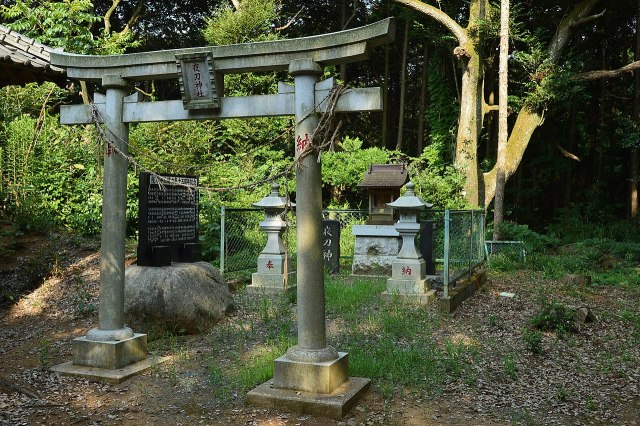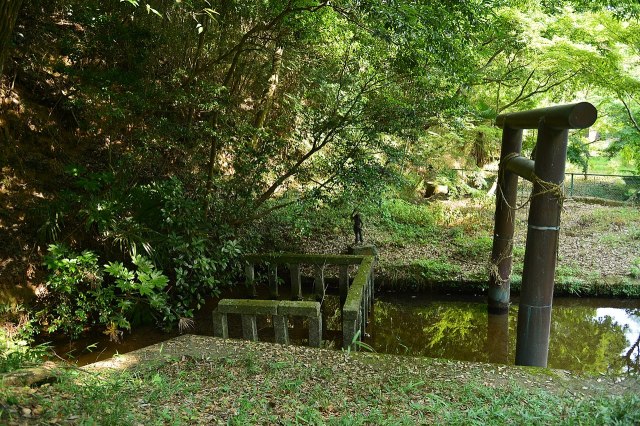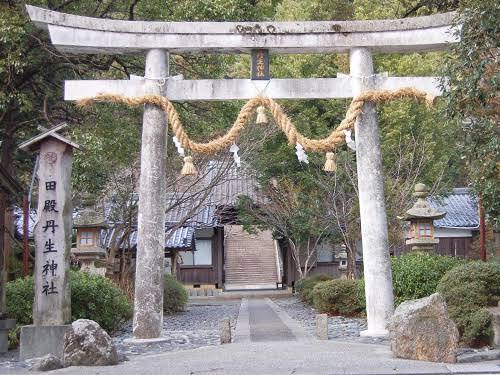#shinto mythology
About Yatsu-no-kami

Yatsu-/Yato-no-kami [夜刀神] (above) are one of the many serpent deities in Japanese mythology. According to “Hitachi-no-kunifudoki” [常陸国風土記] (721), Yatsu-no-kami are said to be deities of snake with a pair of horn growing from their head that are native to today’s Rokkō area [鹿行地域] especially within Namegata City [行方市] (Ibaraki Prefecture). In the text, Yatsu-no-kami were fearsome deities that a person’s entire family would die out just from looking at them, but it turned out that this wasn’t the case for the two characters in this legend who promptly defeated them.
First was Yahazu-no-Matachi [箭括 麻多智] (circa 6th century AC) (below) who was the noble of ancient Namegata that established new rice fields in the West through reclamation of the plateau near the valley. Yatsu-no-kami didn’t approve of this landscaping project and began harassing Matachi. Angered, he armed himself with a stick and armor then charged towards Yatsu-no-kami. As Matachi literally beat the serpent deities into retreat, he drove the same stick he used as weapon through a mound to mark the boundary separating Yatsu-no-kami’s and human’s domain at the entrance of Mt. Tenryū [天龍山] saying: “Anywhere beyond this point is your territory while anywhere before where I stand is our territory for humans. For we shall venerate and worship you forever, I ask you all to not seek vengeance and harm us.”

Alas, Matachi successfully established an approx. twenty-four acres large rice field and a shrine was built to honor Yatsu-no-kami which is today’s Tenryūzan-atago Shrine [天龍山愛宕神社] (below) in Namegata City. This confrontation with Yatsu-no-kami, however, didn’t end with Matachi.

After many years later, another noble by the name of Mibu-no-Maro [壬生 麻呂] (circa Mid. 7th century AC) came to rule Hitachi-no-kuni [常陸国] (modern day most of Ibaraki Prefecture) as a statecraft ruler dispatched by Emperor Kōtoku [孝徳天皇] thus, Matachi’s rice fields and the land around it naturally became his property. There, Maro launched a project to construct an embarkment to better manage the water flow in the valley. Though the Yatsu-no-kami yet again disrupted the construction by loitering around the pond where the water for the rice fields was stored as they relaxed on the nearby chinquapin tree branches. After patiently waiting for them to leave, Maro finally had enough and shouted: “I’m trying to reconstruct this pond in order to improve the life of local people. Just what sort of deities refuses to obey the command of Imperial mandate?” Seeing that Yatsu-no-kami ignored his complaints, Maro summoned his subordinates and instructed: “Go through every grass and bushes and kill all creatures that dwells within.” Alas, Yatsu-no-kami were driven out from the pond and went to hiding. The pond that was then managed by Maro later came to be known as Shi'ii-no-ike [椎井池] which is today’s Tenryū-no-mitarashi [天龍の御手洗] (below) located within Tenryūzan-atago Shrine.

So what is the message that this legend of Yatsu-no-kami from “Hitachi-no-kunifudoki” trying to communicate? First of all, we know that these serpent deities were the lords of the valley within Mt. Tenryū because the word “yatsu” means “valley” in old East Japanese dialect¹, but why did Matachi venerate them while Maro didn’t? This is argued to be because the interaction between Matachi and Yatsu-no-kami in the legend was a metaphor of humanity overcoming the hardship placed by Nature where Matachi (as humanity) subdued Yatsu-no-kami (as Nature) by bringing the land under his control to exploit, but still recognized the volatile characteristics of Nature thus, attempted on comforting by enshrining the deities as a sign of respect and admiration². Where else for Maro, he only came to rule the place as that was his bureaucratic duty which made Yatsu-no-kami a nuisance that got in his way of fulfilling the divine Emperor’s request who was far more supreme than some minor, local deity and this attitude is also reflected in what Maro said to Yatsu-no-kami when he first confronted them unlike Matachi’s final speech².
Another notable feature in this legend is how a stick was used to mark boundaries which is something seen in other Japanese legends. This stick is technically known as Imizue [忌杖] and it also appears in the origin legend of Tadononyū Shrine [田殿丹生神社] (below) (Aridagawa Town [有田川町], Arida Dist. [有田郡], Wakayama Prefecture) where Nifutsuhime-no-mikoto [丹生都比売命] installed four sticks at the corners to mark the sanctuary of where the shrine stands today and began the process of reclamation from there³ just as Matachi split the land between Yatsu-no-kami and human.

Sources:
1. “Kyōkai-no-hassei” [境界の発生] (2002) by Norio Akasaka [赤坂 憲雄] (1953-present)
2. “Bushi-no-genzō…” [武士の原像: 都大路の暗殺者たち] (2020) by Yukihiko Seki [関 幸彦] (1952-present)
